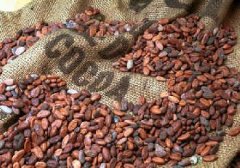The altitude of coffee growing area
I have been arguing with experts on this issue for several years, including how to express it in some of the standards we have developed. I have summed up from the production practice that the choice of coffee planting land can not be measured entirely by the altitude of the suitable area, but should choose the topography and physiognomy. When I am really not sure, we should consult the local people about the occurrence of frost in history.
Coffee at 1700 meters above sea level in the area hardest hit by frost
In fact, many years ago, I repeatedly found that in a normal year, within the altitude that experts think can be planted, frost occurs repeatedly on individual terrain, even in the range of 800m to 900m. However, in the high altitude areas where experts believe that coffee cannot be grown, more than 1400 meters or even 1700 meters above sea level, there is no painful situation of serious frost damage predicted by experts. Therefore, I put forward the theory of using topography to determine the unsuitable and sub-suitable areas for coffee cultivation, and negated the theory of using altitude to measure the suitable areas for coffee cultivation.
In fact, the best blue mountain coffee in the world is grown at an altitude of 1500-2100 meters. Coffee people who can test coffee cups have a common understanding that high mountain clouds produce good coffee, and coffee prefers a shady environment. Rather than what many of our experts believe that coffee must be grown in hot areas at low elevations, we are surprised that many coffee experts do not drink coffee. Not to mention the coffee cup test, I can't imagine how he knows what kind of coffee is good coffee!
The frost disaster in the coffee growing areas in Yunnan has once again verified my theory that the highest altitude growing areas are almost not affected by frost, while in some low-lying areas, the effects of frost disasters are almost devastating.
Important Notice :
前街咖啡 FrontStreet Coffee has moved to new addredd:
FrontStreet Coffee Address: 315,Donghua East Road,GuangZhou
Tel:020 38364473
- Prev

Comparison of cold tolerance between coffee and macadamia nuts
A leading agronomist warned me that coffee shade trees should be promoted with caution. He found that macadamia nuts have bark cracking after frost. In response to this problem, I deliberately observed the behavior of macadamia nuts and coffee in the process of research in the countryside.
- Next

The importance of grinding degree of coffee beans and coffee powder
Previously we have understood the effect of the degree of grinding on the taste of Espresso and the degree of grinding can be adjusted, but the range of adjustment is very small. So what factors affect the adjustment of the degree of grinding?
Related
- Beginners will see the "Coffee pull flower" guide!
- What is the difference between ice blog purified milk and ordinary milk coffee?
- Why is the Philippines the largest producer of crops in Liberia?
- For coffee extraction, should the fine powder be retained?
- How does extracted espresso fill pressed powder? How much strength does it take to press the powder?
- How to make jasmine cold extract coffee? Is the jasmine + latte good?
- Will this little toy really make the coffee taste better? How does Lily Drip affect coffee extraction?
- Will the action of slapping the filter cup also affect coffee extraction?
- What's the difference between powder-to-water ratio and powder-to-liquid ratio?
- What is the Ethiopian local species? What does it have to do with Heirloom native species?

